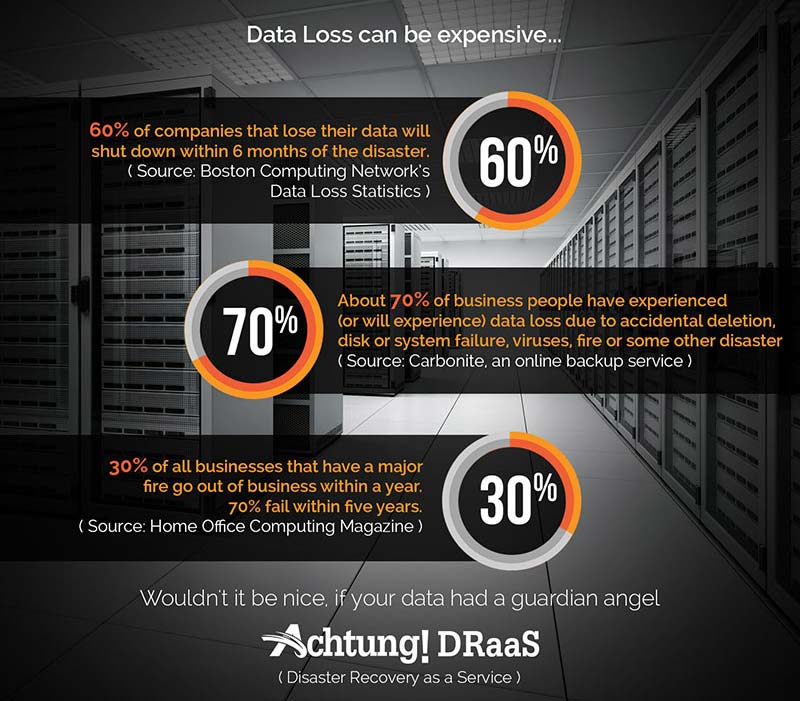Disaster Recovery as a service
October 17, 2015 - 4 minutes read
Disaster Recovery as a service
Did you know that 95% of businesses experienced outages for reasons unrelated to natural disasters? Considering the rising cost of downtime and the competitive “always up” business scenario, organizations are re-evaluating their application and site fail-over capabilities. IDC’s latest report, Dev Ops and The Cost of Downtime, revealed how costly can downtime really be:
- For the Fortune 1000, the average total cost of unplanned application downtime per year is $1.25 billion to $2.5 billion.
- The average hourly cost of an infrastructure failure is $100,000 per hour.
- The average cost of a critical application failure per hour is $500,000 to $1 million.
We have never been this dependent on data— or this vulnerable to its inaccessibility. In a recent survey from ESG, two of the top concerns from all respondents (IT personnel from large and small companies alike), were business continuity/disaster recovery and improved data backup and recovery. To counter such adversaries DRaaS (Disaster Recovery as a Service) comes into the picture.
Disaster Recovery as a Service (DRaaS) is the replication and hosting of physical or virtual servers by a third-party to provide fail over in the event of a man-made or natural catastrophe. Such services help ensure business continuity by minimizing downtime and disruption to customers, clients and employees in the event of failure or other disaster. In the event of an actual disaster, an offsite vendor will be less likely than the enterprise itself to suffer the direct and immediate effects, allowing the provider to implement the disaster recovery plan even in the event of the worst-case scenario: a total or near-total shutdown of the affected enterprise.
Another common question that comes up here is how does DRaaS differ from conventional backups? An easy way to look at a disaster recovery solution is that it is similar to a backup service, but not only is the data copied off site, the compute requirements (hardware, operating systems, subsystems, applications, etc) are duplicated in a manner that will allow them to be used in the event of a disaster as well.
DRaaS can be especially useful for small to mid-size businesses that lack the necessary expertise to provision, configure and test an effective disaster recovery plan. Using DRaaS also means the organization doesn’t have to invest and maintain their own off-site DR environment. Implementing an effective Disaster Recovery and Business Continuance plan can be a really complicated and expensive ordeal.
Achtung Labs offers a comprehensive and cost-effective Disaster Recovery (DR) solution. Our solution set enables you to mitigate the damage of a disaster, and get your business back on its feet within hours of a failure or attack. Also features of the Achtung Labs Disaster Recovery Service such as:
- Proven Technologies
- Top of the line security
- Multi-Site presence (across geo-political zones)
- Multiple failover zones
- Assisted restoration and standby hardware support
Guarantee that you are always safe trusting the continuity of your business with Achtung Labs.
Speak to a representative to learn how we can Disaster-proof your business.
